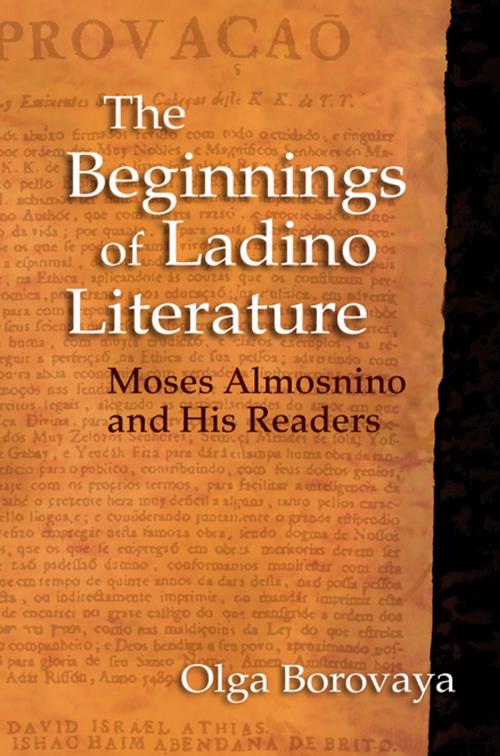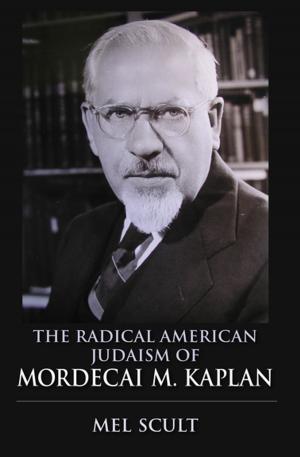The Beginnings of Ladino Literature
Moses Almosnino and His Readers
Fiction & Literature, Literary Theory & Criticism, Jewish, Nonfiction, History| Author: | Olga Borovaya | ISBN: | 9780253025845 |
| Publisher: | Indiana University Press | Publication: | March 13, 2017 |
| Imprint: | Indiana University Press | Language: | English |
| Author: | Olga Borovaya |
| ISBN: | 9780253025845 |
| Publisher: | Indiana University Press |
| Publication: | March 13, 2017 |
| Imprint: | Indiana University Press |
| Language: | English |
Moses Almosnino (1518-1580), arguably the most famous Ottoman Sephardi writer and the only one who was known in Europe to both Jews and Christians, became renowned for his vernacular books that were admired by Ladino readers across many generations. While Almosnino's works were written in a style similar to contemporaneous Castilian, Olga Borovaya makes a strong argument for including them in the corpus of Ladino (Judeo-Spanish) literature. Borovaya suggests that the history of Ladino literature begins at least 200 years earlier than previously believed and that Ladino, like most other languages, had more than one functional style. With careful historical work, Borovaya establishes a new framework for thinking about Ladino language and literature and the early history of European print culture.
Moses Almosnino (1518-1580), arguably the most famous Ottoman Sephardi writer and the only one who was known in Europe to both Jews and Christians, became renowned for his vernacular books that were admired by Ladino readers across many generations. While Almosnino's works were written in a style similar to contemporaneous Castilian, Olga Borovaya makes a strong argument for including them in the corpus of Ladino (Judeo-Spanish) literature. Borovaya suggests that the history of Ladino literature begins at least 200 years earlier than previously believed and that Ladino, like most other languages, had more than one functional style. With careful historical work, Borovaya establishes a new framework for thinking about Ladino language and literature and the early history of European print culture.















